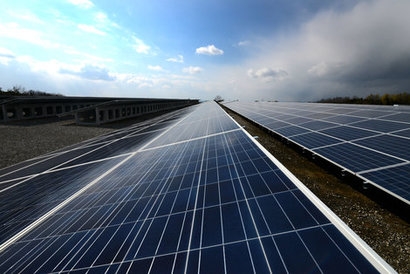
As solar developers seek to deliver on lower bids made under competitive market conditions, they have increasingly aimed to realise the benefits of building at scale. The increased prevalence of ‘megaprojects’ of as much as 1 GW in size and greater use of more advanced technologies such as trackers and bifacial modules in project designs have enabled record low auction prices in key global markets, such as India.
However, the operational performance of these new technologies is not yet fully understood, and, with project designers ‘pushing the envelope’ on plant configurations to reduce generation costs and maximise profitability in competitive market conditions, these projects may be vulnerable to significant technical and financial risks in the long term.
According to Solargis, large-scale solar developers must look hard at the quality of data inputs used to inform design simulations.
The trend towards larger solar projects has been supported by increasingly widespread use of new technologies such as intelligent trackers, bifacial modules, and floating solar. These require new types of accurate, high-resolution data to deliver on their productive potential. For example, bi-facial modules require albedo data to integrate them effectively into a design. Currently, very few datasets contain this information – and still fewer brands of design simulation software can make full use of it.
This can lead to inefficient designs which may fail to deliver as forecast and can incur greater operational costs due to damaged inverters and other components. Ultimately, this may cause unscheduled project downtime as large-scale projects continue to test the limits of hardware.
Simultaneously, the greater overall capital spending for large-scale solar projects has raised the financial stakes and increased the penalties for underperformance. The move towards a merchant, PPA-backed market has shifted financial risk to developers, while competitive auctions are driving lower bids and reducing margin for error in revenue projections.
For a 1 GW project over 25 years, a 1 percent decrease in asset performance translates to lost revenue of EUR 25,000,000. By using accurate resource data to underpin project designs, developers can minimise their exposure to these financial risks and benefit from increased confidence in projected returns.
“As solar projects scale up, lower energy prices than ever before are in reach” said Marcel Suri, Managing Director, Solargis. “But larger projects push the envelope on what is possible with today’s technology. Meanwhile, developers are often still using data inputs that are several years old. If inputs such as solar radiation, air temperature and albedo are inaccurate, the final project design will be flawed and may fail to live up to investor expectations. Accurate, high-resolution solar data will be essential in supporting the continued rise of large-scale solar, reducing risk for developers and giving them increased confidence in the performance of their projects. In future, further integration of broader data inputs such as wind speed and sub-hourly historical time series into design software will enable a new wave of large-scale solar design bolstered by intelligent simulations – but the groundwork must be laid now through industry-wide investment into solar data.”
For additional information:

